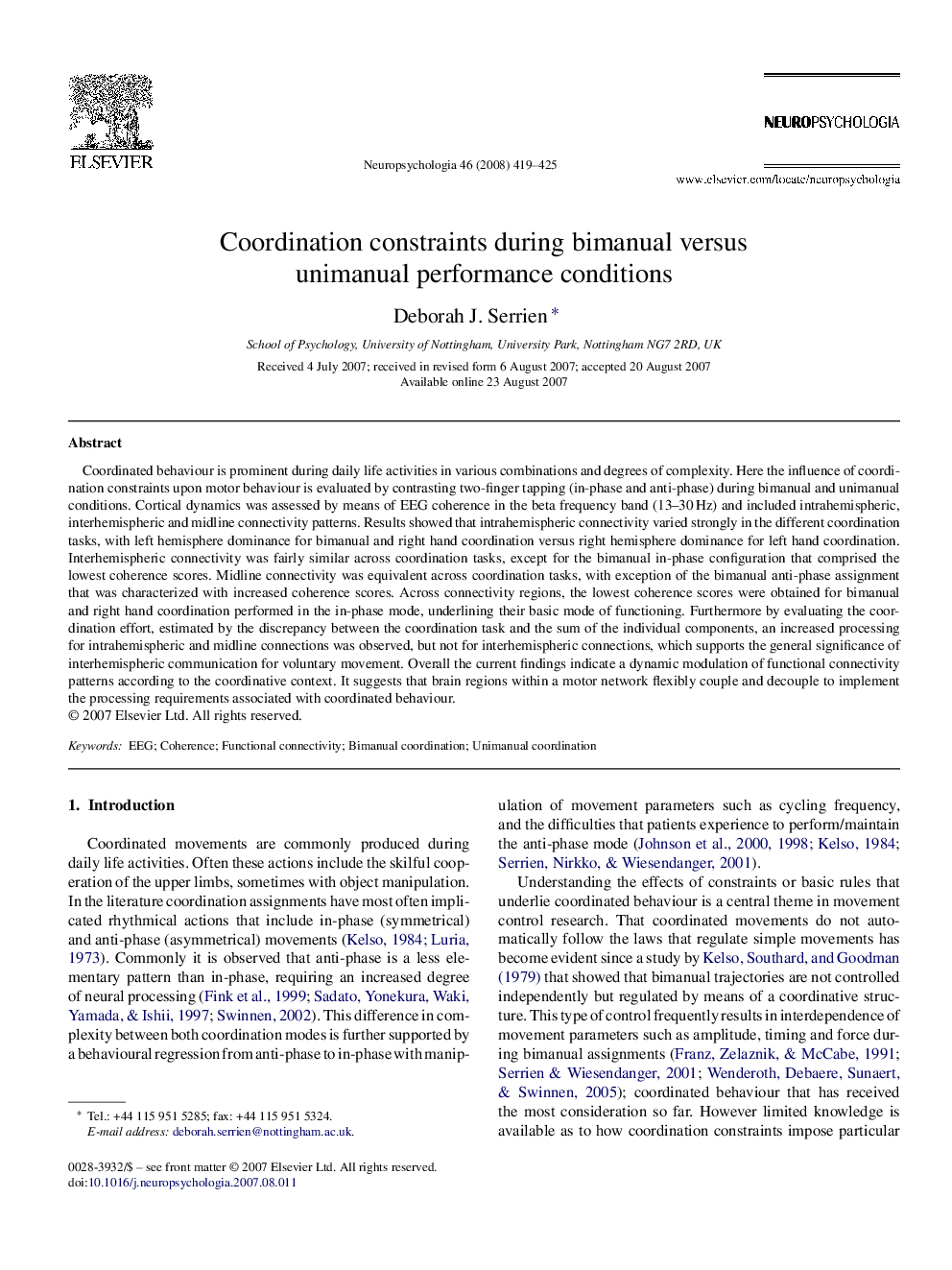| کد مقاله | کد نشریه | سال انتشار | مقاله انگلیسی | نسخه تمام متن |
|---|---|---|---|---|
| 945275 | 925775 | 2008 | 7 صفحه PDF | دانلود رایگان |

Coordinated behaviour is prominent during daily life activities in various combinations and degrees of complexity. Here the influence of coordination constraints upon motor behaviour is evaluated by contrasting two-finger tapping (in-phase and anti-phase) during bimanual and unimanual conditions. Cortical dynamics was assessed by means of EEG coherence in the beta frequency band (13–30 Hz) and included intrahemispheric, interhemispheric and midline connectivity patterns. Results showed that intrahemispheric connectivity varied strongly in the different coordination tasks, with left hemisphere dominance for bimanual and right hand coordination versus right hemisphere dominance for left hand coordination. Interhemispheric connectivity was fairly similar across coordination tasks, except for the bimanual in-phase configuration that comprised the lowest coherence scores. Midline connectivity was equivalent across coordination tasks, with exception of the bimanual anti-phase assignment that was characterized with increased coherence scores. Across connectivity regions, the lowest coherence scores were obtained for bimanual and right hand coordination performed in the in-phase mode, underlining their basic mode of functioning. Furthermore by evaluating the coordination effort, estimated by the discrepancy between the coordination task and the sum of the individual components, an increased processing for intrahemispheric and midline connections was observed, but not for interhemispheric connections, which supports the general significance of interhemispheric communication for voluntary movement. Overall the current findings indicate a dynamic modulation of functional connectivity patterns according to the coordinative context. It suggests that brain regions within a motor network flexibly couple and decouple to implement the processing requirements associated with coordinated behaviour.
Journal: Neuropsychologia - Volume 46, Issue 2, 2008, Pages 419–425